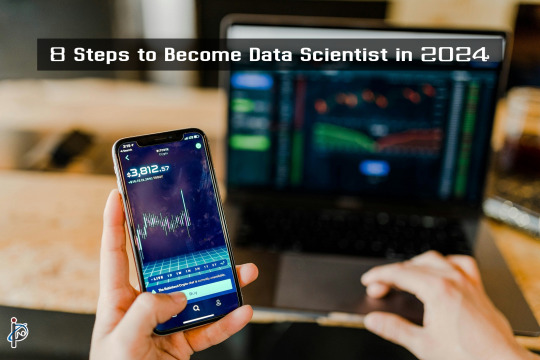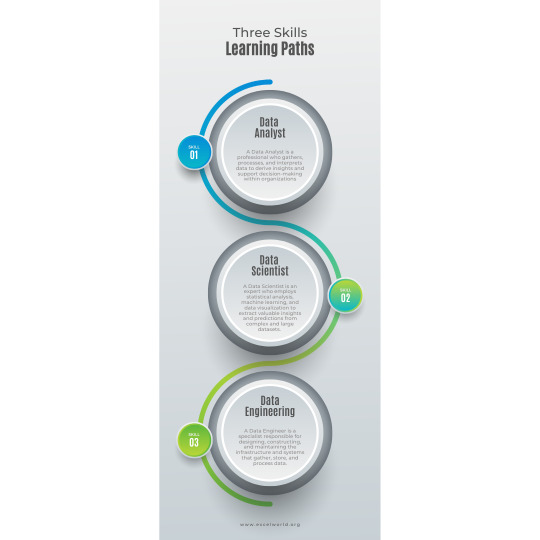#dataengineers
Explore tagged Tumblr posts
Text
Observability data: Secret To Successful Data Integration

Data observability platforms
In the past, creating data pipelines has frequently taken precedence over thorough monitoring and alerting for data engineers. The timely and cost-effective completion of projects frequently took precedence over the long-term integrity of data. Subtle indicators like regular, inexplicable data spikes, slow performance decline, or irregular data quality are typically overlooked by data engineers.
These were perceived as singular occurrences rather than widespread problems. A larger picture becomes visible with improved Observability Data. Uncovered bottlenecks are exposed, resource allocation is optimized, data lineage gaps are found, and firefighting is eventually turned into prevention.
Data engineer
There weren’t many technologies specifically for Data observability accessible until recently. Data engineers frequently turned to creating unique monitoring solutions, which required a lot of time and resources. Although this method worked well in less complicated settings, Observability Data has become an essential part of the data engineering toolbox due to the growing complexity of contemporary data architectures and the growing dependence on data-driven decision-making.
It’s critical to recognize that things are shifting quickly in this situation. According to projections made by Gartner, “by 2026, up from less than 20% in 2024, 50% of enterprises implementing distributed data architectures will have adopted data observability tools toincrease awareness of the current status of the data landscape.”
Data observability is becoming more and more important as data becomes more crucial to company success. Data engineers are now making Observability Data a top priority and a fundamental part of their jobs due to the development of specialized tools and a rising realization of the costs associated with low-quality data.
what is data observability
The process of keeping an eye on and managing data to guarantee its availability, dependability, and quality throughout an organization’s many systems, pipelines, and processes is known as Observability Data. It gives teams a thorough insight of the condition and healthcare of the data, empowering them to see problems early and take preventative action.
Data observability vs Data quality
Dangers lurking in your data pipeline
The following indications indicate whether your data team requires a Observability Data tool:
The high frequency of inaccurate, inconsistent, or missing data can be ascribed to problems with data quality. Finding the source of the data quality problem becomes difficult, even if you can identify the problem. To help ensure data accuracy, data teams frequently need to adhere to a manual method.
Another clue could be long-term outages in data processing operations that keep happening. When data is inaccessible for protracted periods of time, it indicates problems with the reliability of the data pipeline, which undermines trust among downstream consumers and stakeholders.
Understanding data dependencies and relationships presents difficulties for data teams.
If you find yourself using a lot of manual checks and alarms and are unable to handle problems before they affect downstream systems, it may be time to look at observability tools.
The entire data integration process may become more challenging to manage if complex data processing workflows with several steps and a variety of data sources are not well managed.
Another warning flag could be trouble managing the data lifecycle in accordance with compliance guidelines and data privacy and security laws.
A Observability Data tool can greatly enhance your data engineering procedures and the general quality of your data if you’re having any of these problems. Through the provision of data pipeline visibility, anomaly detection, and proactive issue resolution, these technologies can assist you in developing more dependable and effective data systems.
Neglecting the indicators that suggest Observability Data is necessary might have a domino effect on an organization’s undesirable outcomes. Because certain effects are intangible, it might be difficult to accurately estimate these losses; however, they can identify important areas of potential loss.
Data inaccuracies can cause faulty business decisions, lost opportunities, and client attrition, costing money. False data can damage a company’s brand and customers’ trust in its products and services. Although they are hard to measure, the intangible effects on customer trust and reputation can have long-term effects.
Put observability first to prevent inaccurate data from derailing your efforts
Data observability gives data engineers the ability to become data stewards rather than just data movers. You are adopting a more comprehensive, strategic strategy rather than merely concentrating on the technical issues of transferring data from diverse sources into a consolidated repository. You may streamline impact management, comprehend dependencies and lineage, and maximize pipeline efficiency using observability. These advantages all contribute to improved governance, economical resource usage, and reduced expenses.
Data quality becomes a quantifiable indicator that is simple to monitor and enhance with Observability Data. It is possible to anticipate possible problems in your data pipelines and datasets before they become major ones. This methodology establishes a robust and effective data environment.
Observability becomes essential when data complexity increases because it helps engineers to create solid, dependable, and trustworthy data foundations, which ultimately speeds up time-to-value for the entire company. You may reduce these risks and increase the return on investment (ROI) of your data and AI initiatives by making investments in Observability Data.
To put it simply, data observability gives data engineers the ability to create and manage solid, dependable, and high-quality data pipelines that add value to the company.
Read more on govindhtech.com
#Observabilitydata#SuccessfulDataIntegration#datapipelines#Dataengineers#datasyste#datasets#data#DataPrivacy#DataSecurity#technology#Dataobservabilityplatforms#technews#news#govindhtech
0 notes
Text

𝟖 𝐒𝐭𝐞𝐩𝐬 𝐭𝐨 𝐁𝐞𝐜𝐨𝐦𝐞 𝐃𝐚𝐭𝐚 𝐒𝐜𝐢𝐞𝐧𝐭𝐢𝐬𝐭 𝐢𝐧 𝟐𝟎𝟐𝟒
Data Science is 💥booming! Businesses are using it to solve problems, leading to high demand and good salaries for data scientists👨🔬.
This Article is your guide to becoming a data scientist, including the easiest and most valuable way to learn the skills you'll need.
#datascientistin2024#datascientists#dataengineers#datascienceprojects#datasciencejobs#carrerguides#careerplanning#fresherjobs#jobsearch#skills#blog
0 notes
Text
Data Engineers: The Architects of Project Success
Data engineering plays a pivotal role in the success of any data-centric project. Let's dive into why data engineers are game-changers for your project and how they can make a big difference 👇

0 notes
Text

Data engineersgineers are responsible for maintaining data Storage, designing and building the infrastructure Services-Cloud Revolute
#clouddata#dataengineers#Engineering#ITwork#maintainingdatastorage#infrastructure#Designers#cloudrevolute
1 note
·
View note
Text

#DataEngineers#DataEngineering#Infrastructure#DataSystems#DataAvailability#DataAccessibility#ProgrammingLanguages#Python#Java#Scala#DataPipelines#DataWorkflows#Databases#SQL#NoSQL#RelationalDatabases#DistributedDataStores#DataWarehousing#AmazonRedshift#GoogleBigQuery#Snowflake#BigDataTechnologies#Hadoop#Spark#ETLTools#ApacheNiFi#Talend#Informatica#DataModelingTools#DataIntegrationTools
0 notes
Text

Wielding Big Data Using PySpark
Introduction to PySpark
PySpark is the Python API for Apache Spark, a distributed computing framework designed to process large-scale data efficiently. It enables parallel data processing across multiple nodes, making it a powerful tool for handling massive datasets.
Why Use PySpark for Big Data?
Scalability: Works across clusters to process petabytes of data.
Speed: Uses in-memory computation to enhance performance.
Flexibility: Supports various data formats and integrates with other big data tools.
Ease of Use: Provides SQL-like querying and DataFrame operations for intuitive data handling.
Setting Up PySpark
To use PySpark, you need to install it and set up a Spark session. Once initialized, Spark allows users to read, process, and analyze large datasets.
Processing Data with PySpark
PySpark can handle different types of data sources such as CSV, JSON, Parquet, and databases. Once data is loaded, users can explore it by checking the schema, summary statistics, and unique values.
Common Data Processing Tasks
Viewing and summarizing datasets.
Handling missing values by dropping or replacing them.
Removing duplicate records.
Filtering, grouping, and sorting data for meaningful insights.
Transforming Data with PySpark
Data can be transformed using SQL-like queries or DataFrame operations. Users can:
Select specific columns for analysis.
Apply conditions to filter out unwanted records.
Group data to find patterns and trends.
Add new calculated columns based on existing data.
Optimizing Performance in PySpark
When working with big data, optimizing performance is crucial. Some strategies include:
Partitioning: Distributing data across multiple partitions for parallel processing.
Caching: Storing intermediate results in memory to speed up repeated computations.
Broadcast Joins: Optimizing joins by broadcasting smaller datasets to all nodes.
Machine Learning with PySpark
PySpark includes MLlib, a machine learning library for big data. It allows users to prepare data, apply machine learning models, and generate predictions. This is useful for tasks such as regression, classification, clustering, and recommendation systems.
Running PySpark on a Cluster
PySpark can run on a single machine or be deployed on a cluster using a distributed computing system like Hadoop YARN. This enables large-scale data processing with improved efficiency.
Conclusion
PySpark provides a powerful platform for handling big data efficiently. With its distributed computing capabilities, it allows users to clean, transform, and analyze large datasets while optimizing performance for scalability.
For Free Tutorials for Programming Languages Visit-https://www.tpointtech.com/
2 notes
·
View notes
Text
How Dr. Imad Syed Transformed PiLog Group into a Digital Transformation Leader?
The digital age demands leaders who don’t just adapt but drive transformation. One such visionary is Dr. Imad Syed, who recently shared his incredible journey and PiLog Group’s path to success in an exclusive interview on Times Now.

In this inspiring conversation, Dr. Syed reflects on the milestones, challenges, and innovative strategies that have positioned PiLog Group as a global leader in data management and digital transformation.
The Journey of a Visionary:
From humble beginnings to spearheading PiLog’s global expansion, Dr. Syed’s story is a testament to resilience and innovation. His leadership has not only redefined PiLog but has also influenced industries worldwide, especially in domains like data governance, SaaS solutions, and AI-driven analytics.
PiLog’s Success: A Benchmark in Digital Transformation:
Under Dr. Syed’s guidance, PiLog has become synonymous with pioneering Lean Data Governance SaaS solutions. Their focus on data integrity and process automation has helped businesses achieve operational excellence. PiLog’s services are trusted by industries such as oil and gas, manufacturing, energy, utilities & nuclear and many more.
Key Insights from the Interview:
In the interview, Dr. Syed touches upon:
The importance of data governance in digital transformation.
How PiLog’s solutions empower organizations to streamline operations.
His philosophy of continuous learning and innovation.
A Must-Watch for Industry Leaders:
If you’re a business leader or tech enthusiast, this interview is packed with actionable insights that can transform your understanding of digital innovation.
👉 Watch the full interview here:
youtube
The Global Impact of PiLog Group:
PiLog’s success story resonates globally, serving clients across Africa, the USA, EU, Gulf countries, and beyond. Their ability to adapt and innovate makes them a case study in leveraging digital transformation for competitive advantage.
Join the Conversation:
What’s your take on the future of data governance and digital transformation? Share your thoughts and experiences in the comments below.
#datamanagement#data governance#data analysis#data analytics#data scientist#big data#dataengineering#dataprivacy#data centers#datadriven#data#businesssolutions#techinnovation#businessgrowth#businessautomation#digital transformation#piloggroup#drimadsyed#timesnowinterview#datascience#artificialintelligence#bigdata#datadrivendecisions#Youtube
3 notes
·
View notes
Text
Data Professionals: Want to Stand Out?
If you're a Data Engineer, Data Scientist, or Data Analyst, having a strong portfolio can be a game-changer.
Our latest blog dives into why portfolios matter, what to include, and how to build one that shows off your skills and projects. From data pipelines to machine learning models and interactive dashboards, let your work speak for itself!
#DataScience#DataEngineering#TechCareers#DataPortfolio#CareerTips#MachineLearning#DataAnalytics#CodingLife#ai resume#ai resume builder#airesumebuilder
2 notes
·
View notes
Text

🚀 𝐉𝐨𝐢𝐧 𝐃𝐚𝐭𝐚𝐏𝐡𝐢'𝐬 𝐇𝐚𝐜𝐤-𝐈𝐓-𝐎𝐔𝐓 𝐇𝐢𝐫𝐢𝐧𝐠 𝐇𝐚𝐜𝐤𝐚𝐭𝐡𝐨𝐧!🚀
𝐖𝐡𝐲 𝐏𝐚𝐫𝐭𝐢𝐜𝐢𝐩𝐚𝐭𝐞? 🌟 Showcase your skills in data engineering, data modeling, and advanced analytics. 💡 Innovate to transform retail services and enhance customer experiences.
📌𝐑𝐞𝐠𝐢𝐬𝐭𝐞𝐫 𝐍𝐨𝐰: https://whereuelevate.com/drills/dataphi-hack-it-out?w_ref=CWWXX9
🏆 𝐏𝐫𝐢𝐳𝐞 𝐌𝐨𝐧𝐞𝐲: Winner 1: INR 50,000 (Joining Bonus) + Job at DataPhi Winners 2-5: Job at DataPhi
🔍 𝐒𝐤𝐢𝐥𝐥𝐬 𝐖𝐞'𝐫𝐞 𝐋𝐨𝐨𝐤𝐢𝐧𝐠 𝐅𝐨𝐫: 🐍 Python,💾 MS Azure Data Factory / SSIS / AWS Glue,🔧 PySpark Coding,📊 SQL DB,☁️ Databricks Azure Functions,🖥️ MS Azure,🌐 AWS Engineering
👥 𝐏𝐨𝐬𝐢𝐭𝐢𝐨𝐧𝐬 𝐀𝐯𝐚𝐢𝐥𝐚𝐛𝐥𝐞: Senior Consultant (3-5 years) Principal Consultant (5-8 years) Lead Consultant (8+ years)
📍 𝐋𝐨𝐜𝐚𝐭𝐢𝐨𝐧: 𝐏𝐮𝐧𝐞 💼 𝐄𝐱𝐩𝐞𝐫𝐢𝐞𝐧𝐜𝐞: 𝟑-𝟏𝟎 𝐘𝐞𝐚𝐫𝐬 💸 𝐁𝐮𝐝𝐠𝐞𝐭: ₹𝟏𝟒 𝐋𝐏𝐀 - ₹𝟑𝟐 𝐋𝐏𝐀
ℹ 𝐅𝐨𝐫 𝐌𝐨𝐫𝐞 𝐔𝐩𝐝𝐚𝐭𝐞𝐬: https://chat.whatsapp.com/Ga1Lc94BXFrD2WrJNWpqIa
Register now and be a part of the data revolution! For more details, visit DataPhi.
2 notes
·
View notes
Text

#dataengineer#onlinetraining#freedemo#cloudlearning#azuredatlake#Databricks#azuresynapse#AzureDataFactory#Azure#SQL#MySQL#NewTechnolgies#software#softwaredevelopment#visualpathedu#onlinecoaching#ADE#DataLake#datalakehouse#AzureDataEngineering
2 notes
·
View notes
Text
What sets Konnect Insights apart from other data orchestration and analysis tools available in the market for improving customer experiences in the aviation industry?
I can highlight some general factors that may set Konnect Insights apart from other data orchestration and analysis tools available in the market for improving customer experiences in the aviation industry. Keep in mind that the competitive landscape and product offerings may have evolved since my last knowledge update. Here are some potential differentiators:

Aviation Industry Expertise: Konnect Insights may offer specialized features and expertise tailored to the unique needs and challenges of the aviation industry, including airports, airlines, and related businesses.
Multi-Channel Data Integration: Konnect Insights may excel in its ability to integrate data from a wide range of sources, including social media, online platforms, offline locations within airports, and more. This comprehensive data collection can provide a holistic view of the customer journey.
Real-Time Monitoring: The platform may provide real-time monitoring and alerting capabilities, allowing airports to respond swiftly to emerging issues or trends and enhance customer satisfaction.
Customization: Konnect Insights may offer extensive customization options, allowing airports to tailor the solution to their specific needs, adapt to unique workflows, and focus on the most relevant KPIs.
Actionable Insights: The platform may be designed to provide actionable insights and recommendations, guiding airports on concrete steps to improve the customer experience and operational efficiency.
Competitor Benchmarking: Konnect Insights may offer benchmarking capabilities that allow airports to compare their performance to industry peers or competitors, helping them identify areas for differentiation.
Security and Compliance: Given the sensitive nature of data in the aviation industry, Konnect Insights may include robust security features and compliance measures to ensure data protection and adherence to industry regulations.
Scalability: The platform may be designed to scale effectively to accommodate the data needs of large and busy airports, ensuring it can handle high volumes of data and interactions.
Customer Support and Training: Konnect Insights may offer strong customer support, training, and consulting services to help airports maximize the value of the platform and implement best practices for customer experience improvement.
Integration Capabilities: It may provide seamless integration with existing airport systems, such as CRM, ERP, and database systems, to ensure data interoperability and process efficiency.
Historical Analysis: The platform may enable airports to conduct historical analysis to track the impact of improvements and initiatives over time, helping measure progress and refine strategies.
User-Friendly Interface: Konnect Insights may prioritize a user-friendly and intuitive interface, making it accessible to a wide range of airport staff without requiring extensive technical expertise.

It's important for airports and organizations in the aviation industry to thoroughly evaluate their specific needs and conduct a comparative analysis of available solutions to determine which one aligns best with their goals and requirements. Additionally, staying updated with the latest developments and customer feedback regarding Konnect Insights and other similar tools can provide valuable insights when making a decision.
#DataOrchestration#DataManagement#DataOps#DataIntegration#DataEngineering#DataPipeline#DataAutomation#DataWorkflow#ETL (Extract#Transform#Load)#DataIntegrationPlatform#BigData#CloudComputing#Analytics#DataScience#AI (Artificial Intelligence)#MachineLearning#IoT (Internet of Things)#DataGovernance#DataQuality#DataSecurity
2 notes
·
View notes
Text
Data Engineer vs. Data Scientist The Battle for Data Supremacy
In the rapidly evolving landscape of technology, two professions have emerged as the architects of the data-driven world: Data Engineers and Data Scientists. In this comparative study, we will dive deep into the worlds of these two roles, exploring their unique responsibilities, salary prospects, and essential skills that make them indispensable in the realm of Big Data and Artificial Intelligence.
The world of data is boundless, and the roles of Data Engineers and Data Scientists are indispensable in harnessing its true potential. Whether you are a visionary Data Engineer or a curious Data Scientist, your journey into the realm of Big Data and AI is filled with infinite possibilities. Enroll in the School of Core AI’s Data Science course to day and embrace the future of technology with open arms.
2 notes
·
View notes
Text

#DataEngineers#DataEngineering#Infrastructure#DataSystems#DataAvailability#DataAccessibility#ProgrammingLanguages#Python#Java#Scala#DataPipelines#DataWorkflows#Databases#SQL#NoSQL#RelationalDatabases#DistributedDataStores#DataWarehousing#AmazonRedshift#GoogleBigQuery#Snowflake#BigDataTechnologies#Hadoop#Spark#ETLTools#ApacheNiFi#Talend#Informatica#DataModelingTools#DataIntegrationTools
0 notes
Text
Arkatiss LLP is a digital transformation solutions company, helping organizations in business process reengineering, data engineering and information sharing solutions to accelerate automation as a long-term goal for better ROI
#arkatiss#digital#digitaltransformation#business#dataengineering#businessprocessreengineering#informationsharing#NewJersey#usa
2 notes
·
View notes
Text
📢 FREE MASTERCLASS
🔷 Azure Data Engineering with Data Factory 🗓️ 19th June | 🕢 7:30 AM IST 👨🏫 Trainer: Mr. Venkat Reddy 🔗 https://tr.ee/vepeQC
📌 Learn Data Pipelines, Azure Integration & Real-Time Projects

0 notes
Text
Beyond the Pipeline: Choosing the Right Data Engineering Service Providers for Long-Term Scalability
Introduction: Why Choosing the Right Data Engineering Service Provider is More Critical Than Ever
In an age where data is more valuable than oil, simply having pipelines isn’t enough. You need refineries, infrastructure, governance, and agility. Choosing the right data engineering service providers can make or break your enterprise’s ability to extract meaningful insights from data at scale. In fact, Gartner predicts that by 2025, 80% of data initiatives will fail due to poor data engineering practices or provider mismatches.
If you're already familiar with the basics of data engineering, this article dives deeper into why selecting the right partner isn't just a technical decision—it’s a strategic one. With rising data volumes, regulatory changes like GDPR and CCPA, and cloud-native transformations, companies can no longer afford to treat data engineering service providers as simple vendors. They are strategic enablers of business agility and innovation.
In this post, we’ll explore how to identify the most capable data engineering service providers, what advanced value propositions you should expect from them, and how to build a long-term partnership that adapts with your business.
Section 1: The Evolving Role of Data Engineering Service Providers in 2025 and Beyond
What you needed from a provider in 2020 is outdated today. The landscape has changed:
📌 Real-time data pipelines are replacing batch processes
📌 Cloud-native architectures like Snowflake, Databricks, and Redshift are dominating
📌 Machine learning and AI integration are table stakes
📌 Regulatory compliance and data governance have become core priorities
Modern data engineering service providers are not just builders—they are data architects, compliance consultants, and even AI strategists. You should look for:
📌 End-to-end capabilities: From ingestion to analytics
📌 Expertise in multi-cloud and hybrid data ecosystems
📌 Proficiency with data mesh, lakehouse, and decentralized architectures
📌 Support for DataOps, MLOps, and automation pipelines
Real-world example: A Fortune 500 retailer moved from Hadoop-based systems to a cloud-native lakehouse model with the help of a modern provider, reducing their ETL costs by 40% and speeding up analytics delivery by 60%.
Section 2: What to Look for When Vetting Data Engineering Service Providers
Before you even begin consultations, define your objectives. Are you aiming for cost efficiency, performance, real-time analytics, compliance, or all of the above?
Here’s a checklist when evaluating providers:
📌 Do they offer strategic consulting or just hands-on coding?
📌 Can they support data scaling as your organization grows?
📌 Do they have domain expertise (e.g., healthcare, finance, retail)?
📌 How do they approach data governance and privacy?
📌 What automation tools and accelerators do they provide?
📌 Can they deliver under tight deadlines without compromising quality?
Quote to consider: "We don't just need engineers. We need architects who think two years ahead." – Head of Data, FinTech company
Avoid the mistake of over-indexing on cost or credentials alone. A cheaper provider might lack scalability planning, leading to massive rework costs later.
Section 3: Red Flags That Signal Poor Fit with Data Engineering Service Providers
Not all providers are created equal. Some red flags include:
📌 One-size-fits-all data pipeline solutions
📌 Poor documentation and handover practices
📌 Lack of DevOps/DataOps maturity
📌 No visibility into data lineage or quality monitoring
📌 Heavy reliance on legacy tools
A real scenario: A manufacturing firm spent over $500k on a provider that delivered rigid ETL scripts. When the data source changed, the whole system collapsed.
Avoid this by asking your provider to walk you through previous projects, particularly how they handled pivots, scaling, and changing data regulations.
Section 4: Building a Long-Term Partnership with Data Engineering Service Providers
Think beyond the first project. Great data engineering service providers work iteratively and evolve with your business.
Steps to build strong relationships:
📌 Start with a proof-of-concept that solves a real pain point
📌 Use agile methodologies for faster, collaborative execution
📌 Schedule quarterly strategic reviews—not just performance updates
📌 Establish shared KPIs tied to business outcomes, not just delivery milestones
📌 Encourage co-innovation and sandbox testing for new data products
Real-world story: A healthcare analytics company co-developed an internal patient insights platform with their provider, eventually spinning it into a commercial SaaS product.
Section 5: Trends and Technologies the Best Data Engineering Service Providers Are Already Embracing
Stay ahead by partnering with forward-looking providers who are ahead of the curve:
📌 Data contracts and schema enforcement in streaming pipelines
📌 Use of low-code/no-code orchestration (e.g., Apache Airflow, Prefect)
📌 Serverless data engineering with tools like AWS Glue, Azure Data Factory
📌 Graph analytics and complex entity resolution
📌 Synthetic data generation for model training under privacy laws
Case in point: A financial institution cut model training costs by 30% by using synthetic data generated by its engineering provider, enabling robust yet compliant ML workflows.
Conclusion: Making the Right Choice for Long-Term Data Success
The right data engineering service providers are not just technical executioners—they’re transformation partners. They enable scalable analytics, data democratization, and even new business models.
To recap:
📌 Define goals and pain points clearly
📌 Vet for strategy, scalability, and domain expertise
📌 Watch out for rigidity, legacy tools, and shallow implementations
📌 Build agile, iterative relationships
📌 Choose providers embracing the future
Your next provider shouldn’t just deliver pipelines—they should future-proof your data ecosystem. Take a step back, ask the right questions, and choose wisely. The next few quarters of your business could depend on it.
#DataEngineering#DataEngineeringServices#DataStrategy#BigDataSolutions#ModernDataStack#CloudDataEngineering#DataPipeline#MLOps#DataOps#DataGovernance#DigitalTransformation#TechConsulting#EnterpriseData#AIandAnalytics#InnovationStrategy#FutureOfData#SmartDataDecisions#ScaleWithData#AnalyticsLeadership#DataDrivenInnovation
0 notes